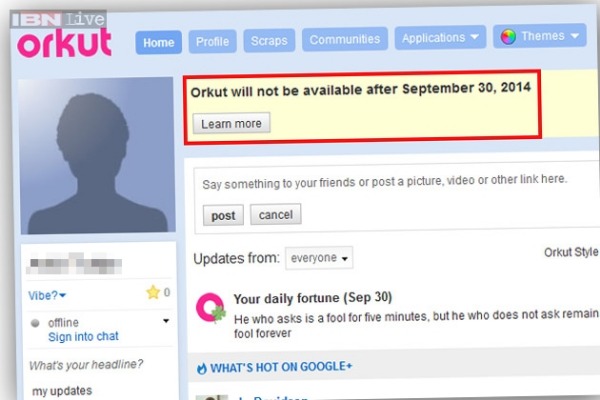Orkut Farewell. Orkut?
 You won't be logging into Orkut any more - if you ever did log in. Do you know about Orkut? Maybe this post about its demise is also your introduction to Google’s first foray into social networking.
You won't be logging into Orkut any more - if you ever did log in. Do you know about Orkut? Maybe this post about its demise is also your introduction to Google’s first foray into social networking.
Started in 2004, Orkut saw impressive early growth and has been popular in some countries, but never caught on in English-speaking countries. It didn't help that 2004 was also the year that Facebook started in 2004.
Orkut by 2008 was the top social media site in Brazil and India. Eventually, Facebook overtook Orkut even in Brazil and India. In India, Facebook surpassed Orkut in terms of total registered users in 2010. In Brazil, the same happened in 2012. I have written about Orkut a few times and had created an account to see what it was all about, but never really found it compelling.
Meanwhile, Google launched its current attempt at a social network, Google+, in 2011. Plus has been more successful in the U.S. but is still struggling and user numbers still lag way behind those of Facebook.
Google announced it would shut down Orkut (as it has done with a good number of other services like Buzz and Wave) on September 30, 2014 and is no longer accepting new users. You can export your profile data, posts and photos using a service called Google Takeout that will be available until September 2016.
 He wondered how Netflix with its 40 million users (more than HBO now) decides on the genres that a film fits into in order to quantify your personal tastes.
He wondered how Netflix with its 40 million users (more than HBO now) decides on the genres that a film fits into in order to quantify your personal tastes. In the
In the